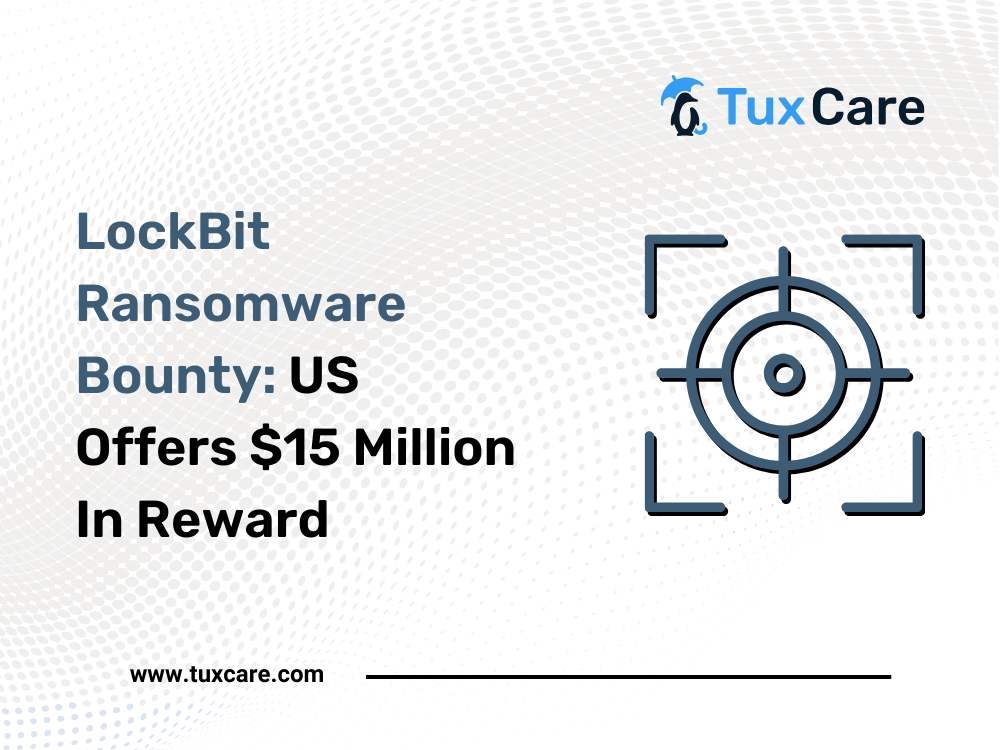LockBit Ransomware Bounty: US Offers $15 Million In Reward
In a landscape where cyber threats loom large, the hunt for cybercriminals intensifies. Today, we’re turning the spotlight on LockBit ransomware attacks and the unprecedented $15 million bounty offered by the U.S. government to dismantle its operations. International cooperation against ransomware is essential in combating cyber threats and safeguarding digital infrastructures worldwide.
In this blog post, we dive into the intricacies of LockBit ransomware and explore the efforts to combat this digital menace.
LockBit Ransomware Bounty
The U.S. State Department has recently declared a substantial monetary reward being dubbed as the “LockBit Ransomware Bounty,” reaching up to $15 million, for valuable information leading to the identification and arrest of key figures within the notorious LockBit ransomware group. This move comes in response to the group’s extensive track record of over 2,000 attacks worldwide since January 2020, causing significant disruptions, data loss, and ransom payments exceeding $144 million.
LockBit: A Menace to Global Cybersecurity
LockBit, a ransomware-as-a-service (RaaS) operation, has been a persistent threat for over four years. Its criminal activities, orchestrated through a network of affiliates, have targeted businesses and critical infrastructure globally. The recent disruption, spearheaded by the U.K. National Crime Agency (NCA), underscores the international effort to curb the menace caused by LockBit.
Business Model: Profiting from Extortion
Ransomware groups like LockBit thrive on a profitable business model that involves extorting companies by stealing sensitive data and encrypting it. Operating under the umbrella of Russian e-crime groups, they exploit the challenges faced by Western law enforcement due to jurisdictional limitations.
Identifying LockBit Leadership
Chester Wisniewski, Global Field CTO at Sophos, notes LockBit’s ascension as the most prolific ransomware group post-Conti’s departure in mid-2022. Their indiscriminate attacks, targeting diverse infrastructures, have earned them the infamous title of the most destructive ransomware group in recent years.
Unconventional Tactics: Bug Bounty Program
In an unexpected turn, LockBit became the first ransomware group to announce a bug bounty program in 2022. Offering rewards of up to $1 million, this initiative aimed at identifying security vulnerabilities in its website and locker software showcased the group’s evolving strategies.
LockBit’s operational scale grew by consistently introducing new features, providing robust customer support, and employing marketing stunts, such as paying individuals to tattoo the group’s logo.
The unique approach of allowing affiliates to collect ransom payments instilled confidence, attracting more affiliates to join their criminal endeavors. Protecting critical infrastructure is a paramount concern for ensuring the resilience and security of nations in the face of evolving threats.
Law Enforcement Action and Investigation
The takedown of LockBit resulted from a meticulous months-long cybercrime investigation that commenced in April 2022. This operation led to the arrest of three affiliates in Poland and Ukraine, the indictment of two alleged members in the U.S., and the confiscation of 34 servers and 1,000 decryption keys crucial for victim data recovery.
LockBit’s bespoke data exfiltration tool, StealBit, exemplifies the group’s attempt to offer a comprehensive “one-stop-shop” service to its affiliates. This tool is utilized to export data through the affiliate’s infrastructure, aiming to evade detection effectively.
Challenges in Dismantling Ransomware Syndicates
While the recent takedown dealt a significant blow to LockBit, the fluid structure of RaaS operations implies that dismantling them may not entirely eradicate the criminal enterprise. The likelihood of these groups regrouping and resurfacing under different names poses an ongoing challenge for law enforcement agencies.
Future Outlook and Collective Action
Although comprehensive degradation of LockBit’s infrastructure may lead to a temporary cessation of activities, history indicates that these groups tend to rebrand and resume operations. The collaborative effort to disrupt their activities, increase the fear of legal consequences, and elevate the operational costs remains crucial in mitigating the impact of such criminal syndicates.
Conclusion
In conclusion, the U.S. State Department’s substantial ransomware reward program serves as a testament to the gravity of the threat posed by ransomware groups like LockBit. The recent law enforcement action signifies a step in the right direction, emphasizing the importance of international collaboration to combat cybercrime effectively.
Robust cybersecurity measures are imperative for safeguarding sensitive data and mitigating the risk of cyber attacks in today’s interconnected digital landscape. As we collectively work towards raising the costs for these criminal syndicates, the pursuit of justice remains paramount to ensure a safer digital landscape for businesses and individuals alike in combating cyber threats.
The sources for this piece include articles in The Hacker News and Reuters.



 Documentation
Documentation Login
Login




